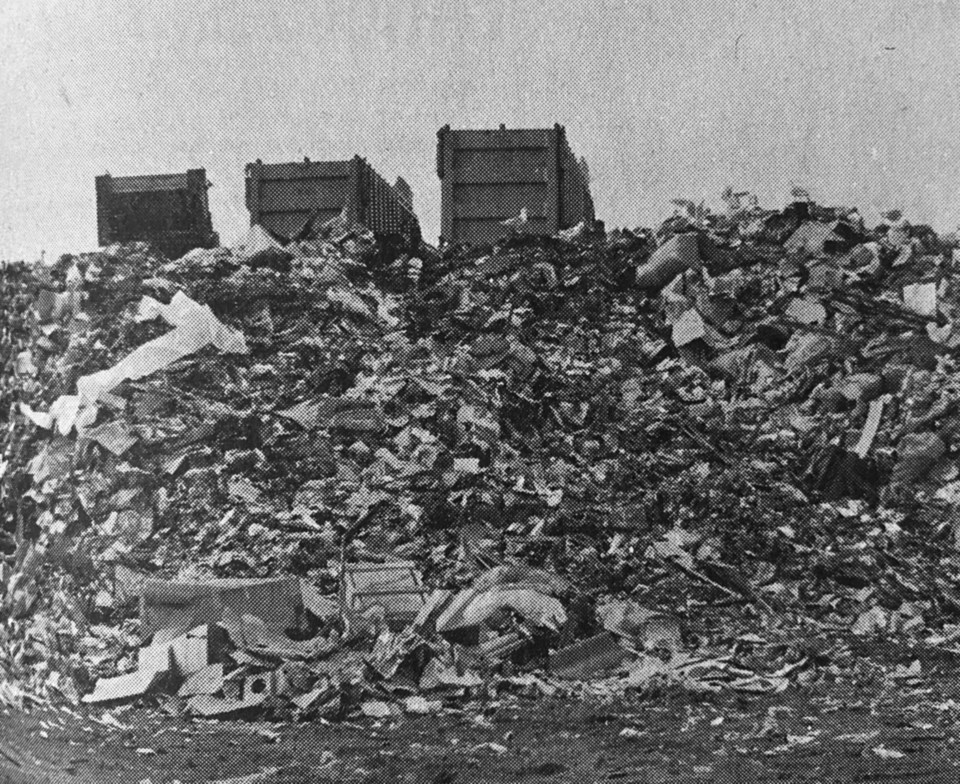Let us throwback to when the Vancouver Landfill opened in Delta on Jan. 1, 1966.
The idea of using Burns Bog as a landfill surfaced five years earlier when a private company tried to get permission to develop a dump in the Sunbury area of North Delta.
Residents at the time objected, expressing fears about smells, vermin, polluted water, smoke and dust. Another private company also tried to locate there, but was turned down.
Later in 1961, Delta council agreed on the use of a different area, the bog, as a sanitary landfill and there was little, if any, backlash to the idea.
The following year, Reeve Clarence Taylor, noting many meetings had been held with Vancouver engineers as well as experts from the U.S. and Canada, said the disposal of refuse in a landfill would solve Delta's garbage problems, clear an unsightly and unsanitary incinerator from North Delta as well as provide approximately 400 hectares (1,000 acres) of reclaimed land to Delta once landfill operations had ceased.
Delta's garbage would be accepted and covered for free and only refuse from Vancouver and Delta would be accepted, unless both parties agreed otherwise. Other municipalities were allowed to use the site years later.
The 1962 deal would also see Delta receive $20,000 a year from Vancouver to cover taxes, permits, licenses, maintenance of roads used by Vancouver, royalties and other incidental expenses.
Once completed, the change in elevation would not be more than six metres (20 feet), while the land reportedly would be transformed into recreational areas, airstrips or parks.
“It's a good thing cows don't fly,” one Ladner resident told Delta council a month after the landfill opened, complaining about not only the smell, but the thousands of seagulls flying over her house. Even civic politicians were upset, complaining the mountains of garbage were an eyesore and that Vancouver wasn't living up to its responsibilities in properly covering material as well, not dealing with people dumping large loads of trash outside the site.
The original agreement was for a term of 20 years and saw about 12 hectares (30 acres) filled annually.
In 1999, the City of Vancouver, which operates the dump, Metro Vancouver and Delta entered into a new long-term agreement whereby the operational life was extended to 2037.
Garbage would be permitted to be piled higher on the existing footprint and in 2037 the site is to be transferred to Delta.
Work by Vancouver has been well underway on the site’s eventual closure. An end-use plan must also be developed that meets with Ministry of Environment and Climate Change Strategy's approval.
As each phase of the landfill is filled to its design height, it is closed using an engineered cover system. The cover system is designed to minimize leachate generation and maximize landfill gas capture.
Since 2009, the Western 40 Hectares as well as Phases 1, 2, 3 and 4 have progressively closed, with the exception of four hectares on the crest of Phase 4 North which was deferred to 2022.
When it comes to the future uses of the site once the landfill is closed, a 2020 report to Delta council noted, “The End Use Plan could include a mix of potential future uses for the land, including natural areas, environmental buffer areas around the perimeter, and active light industrial uses in the centre, such as recycling and waste diversion infrastructure and green energy opportunities. In addition, opportunities to support the Highway 99 green corridor will be reviewed.”
Mayor George Harvie at the time wrote a letter to his Vancouver counterpart, Kennedy Stewart, saying, “I am particularly interested in investigating the possibility of landfill lands being used to support increased transit use and bus frequency along the Highway 99 corridor in the future, and to help facilitate the transition to battery electric buses.”




